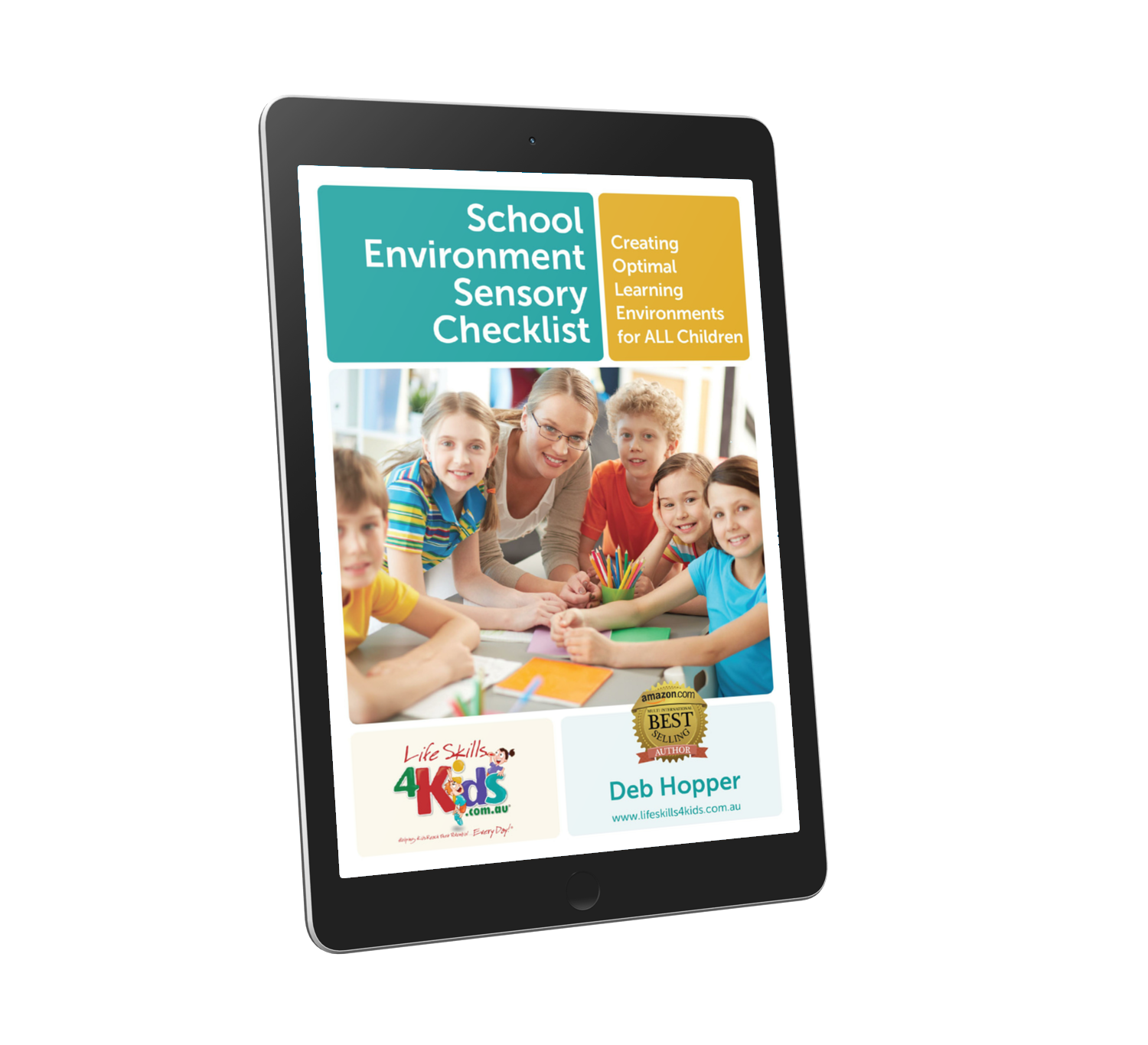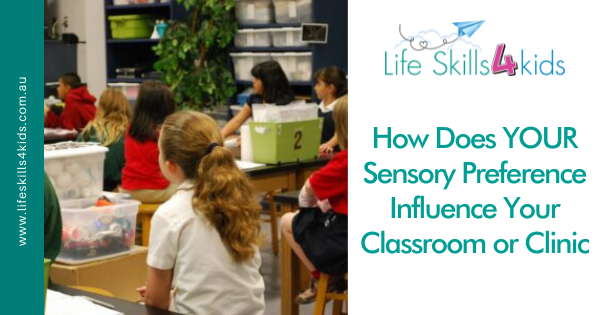YOUR Sensory Preference in Classroom or Clinic
How aware are you of your own sensory preferences and how does that impact in our professional lives and in the classroom?
There are three main areas of sensory preferences.
- We have the sensory seekers, who are always on the move. We see these children in our classrooms and clinics. They are fun, loud, boisterous and full of energy!
- We have the under-responders, and they’re the people who like to … yeah, they’re a bit more chilled and laid back and find it a bit hard to get going. I’m one of these people, so I like to go for a walk or do some exercise in the morning, because that really helps to wake up my nervous system and get me going. But I have to make a concerted effort to actually do that, because I just find that hard. I don’t seek it out naturally.
- The other, the third one, is a sensory avoider. That is someone who doesn’t like touch and noise, and they might often withdraw.
We are often a mix of these sensory perferences. I know that for myself, again, if I’m in a busy conference or a room, then I’ll often retreat outside where it’s a bit quieter, because that just helps my nervous system to regroup, to be able to focus and get organised for learning. So I feel that I’m a mixture of being a sensory under responder and sensory avoider.
So think about which of those three you might be primarily.
- Are you a seeker? Are you seeking out movement? Are you seeking out muscle input? Do you like to get up and get the kids moving, run around the playground, or run around the therapy room?
- Are you under-responsive? Do you have to force yourself to get moving, but then once you actually do, then you feel much better and more alert?
- Or are you more over-responsive, needing to retreat from those sensory experiences?
How does this impact on
- your learning style?
- the colours in your classroom or clinic
- the way you decorate your notice boards or display art and craft? Are you a very organised person, who do you feel invigorated with lots of things around in a ‘comfortable’, homey or more cluttered environment?
- your desk? Do you clear it off every day and are you up to date with filing, or are you ‘creative’ and know exactly where everything is under piles of photocopying on your desk.
There is no right or right answers for how we create our learning or work areas, but we need to have an understanding of how the environment DOES impact on the learning style and sensory needs of the children we work with.
For more information on how to create best practice classroom environments, enrol in our 20 Day Classroom Detox.
School Environment Sensory Checklist (eBook)
Do you have children in your class who struggle with autism, learning difficulties or reduced concentration? Then the School Environment Sensory Checklist (SESC) is your entry into transforming your classroom!
Quickly and easily evaluate your classroom from a sensory perspective to enhance learning needs of all children, including children with autism and learning difficulties.
Have less distracted children who listen for longer and enjoy times of focused learning and easier transitions. Whether you are a newly qualified teacher or have many years experience, the School Environment Sensory Checklist (SESC) will refresh your vision for your classroom!


